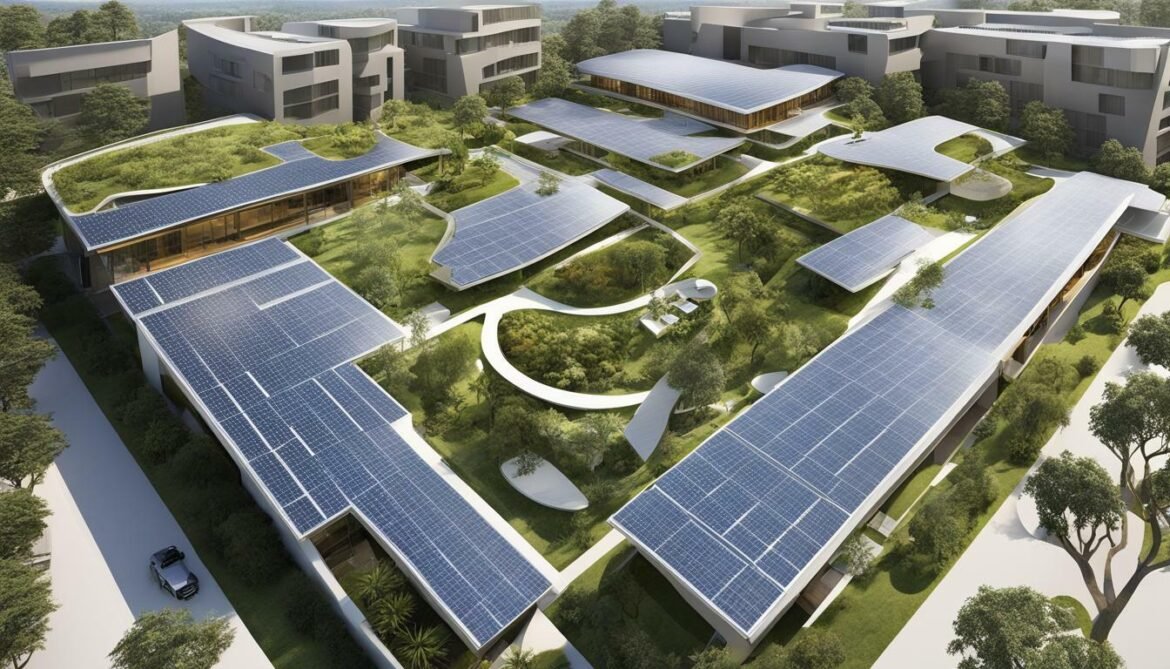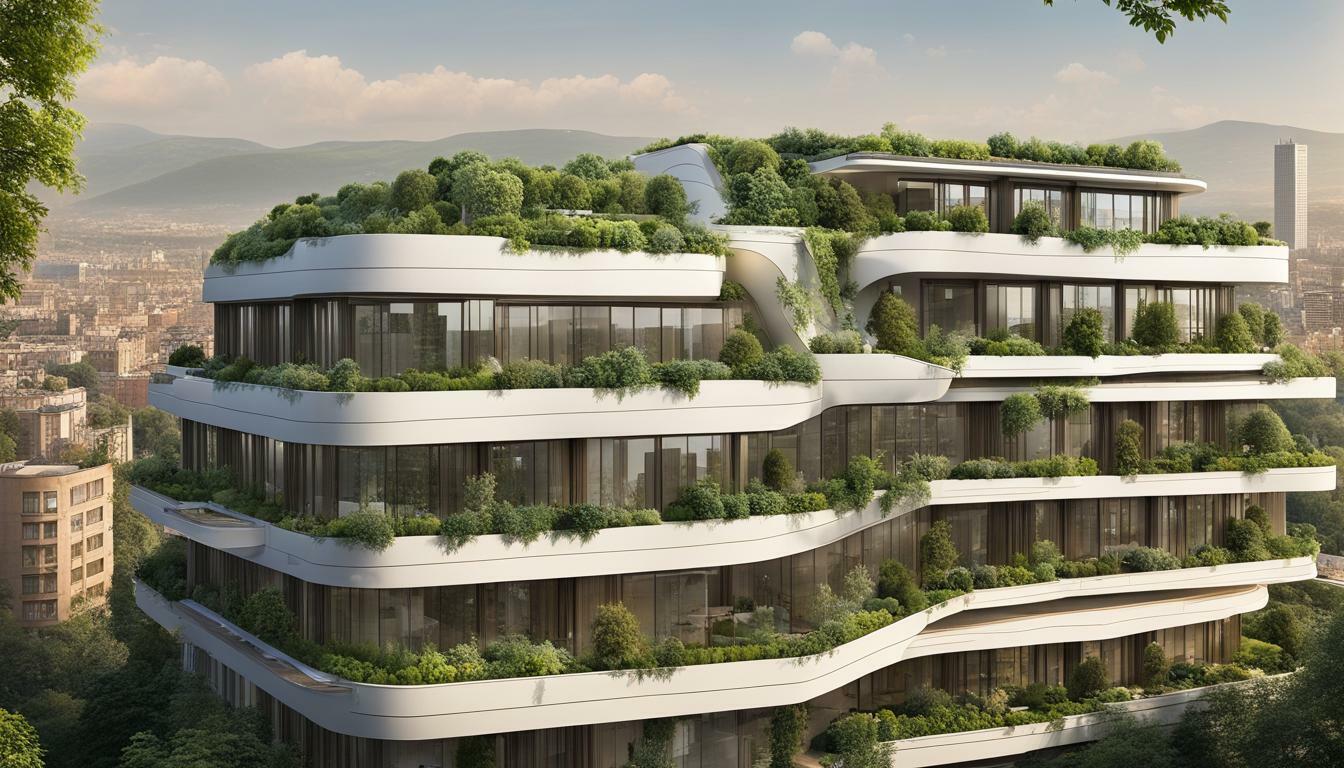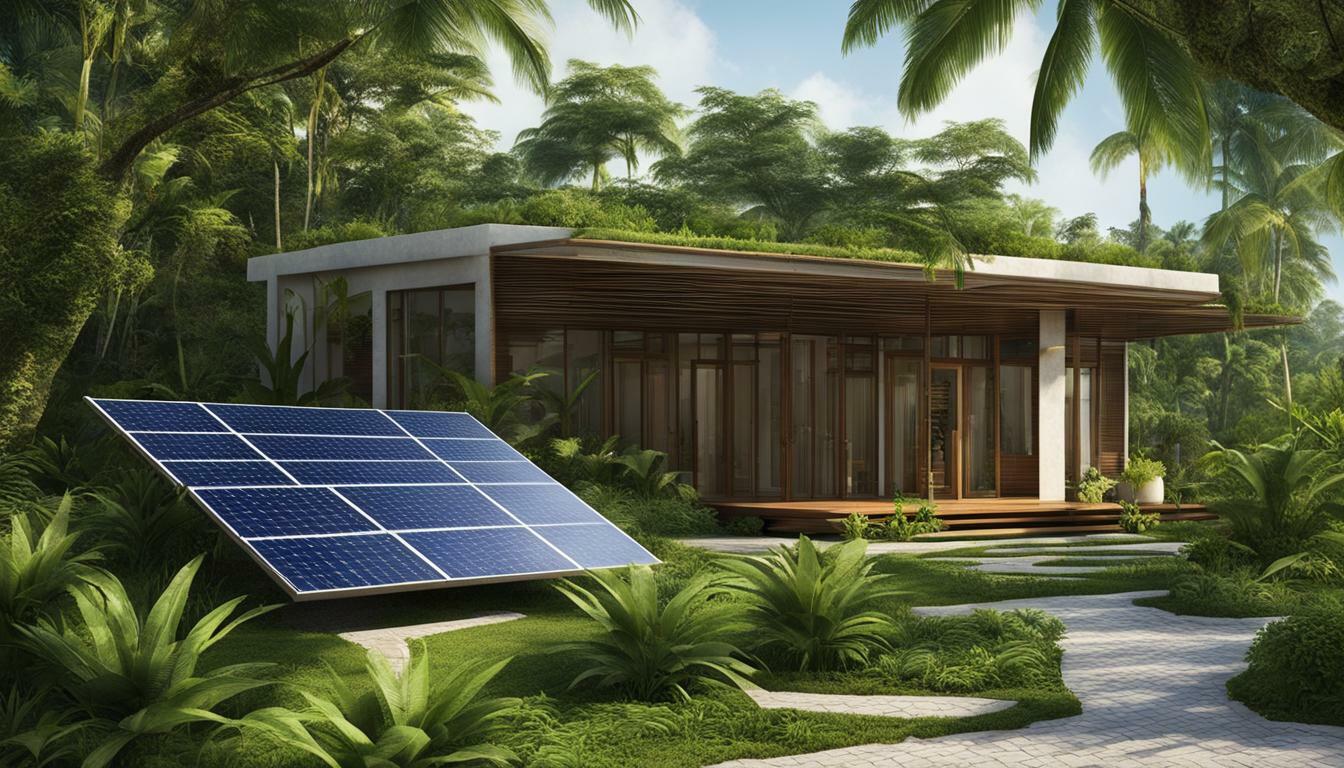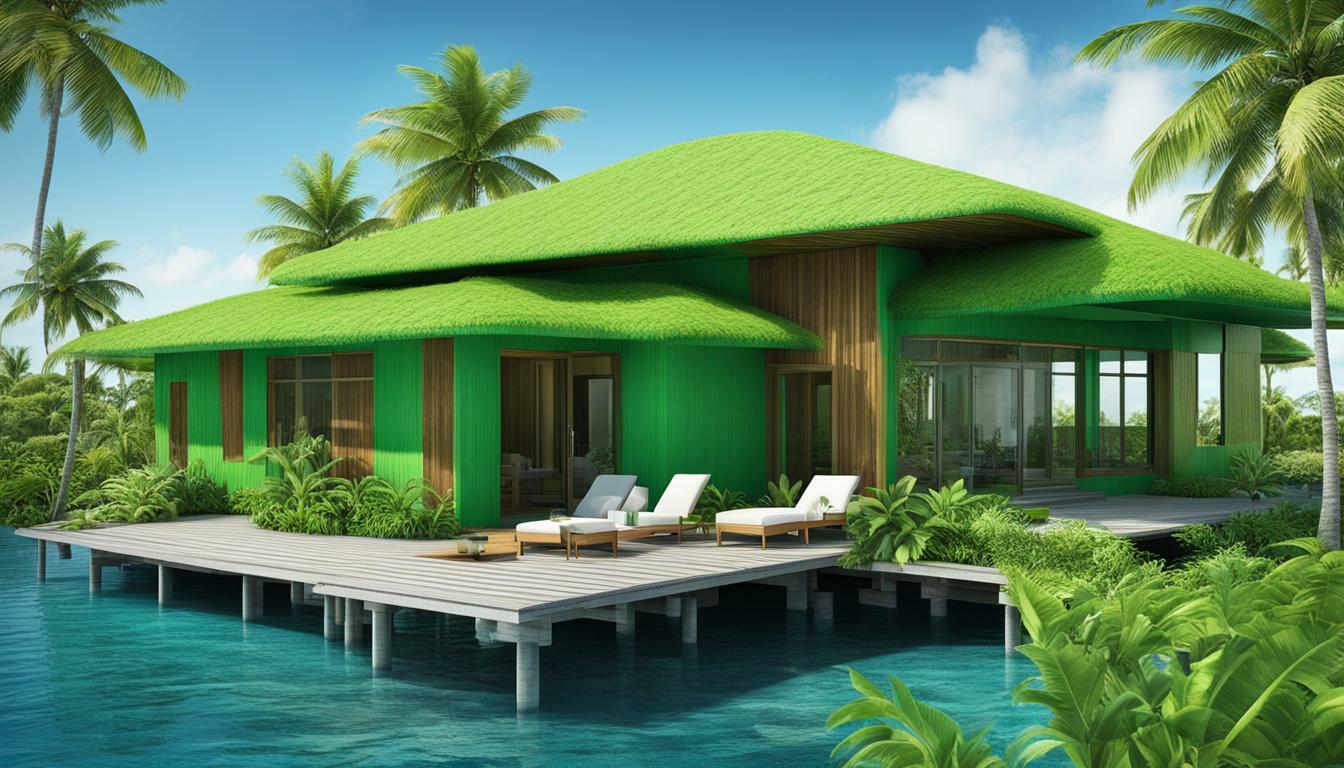Revolutionising Construction: Green Building in Australia
As the world becomes increasingly conscious of environmental issues, sustainable construction practices are gaining popularity in Australia. Green building is revolutionising the construction industry by reducing the impact of buildings on the environment. It involves the use of environmentally friendly architecture, energy-efficient infrastructure, eco-friendly building materials, renewable energy systems, green design principles, low carbon emission buildings, sustainable urban planning, and green construction practices.
Green building in Australia is not just about creating energy-efficient buildings; it is also about creating a sustainable built environment that promotes healthy living and reduces carbon emissions. Sustainable construction practices are becoming more important in Australia as it is one of the world’s largest emitters of greenhouse gases per capita. By adopting green building practices, we can create a more sustainable and resilient future for the construction industry in Australia.
However, in June 2022, this article revealed that A new study has revealed that Australia’s five most common environmentally sustainable design (ESD) rating tools can award building projects a world-leading ‘green’ rating without a single tree being retained or planted.
Key Takeaways:
- Green building involves environmentally friendly architecture, energy-efficient infrastructure, eco-friendly building materials, renewable energy systems, green design principles, low carbon emission buildings, sustainable urban planning, and green construction practices.
- Green building creates a sustainable and resilient built environment that promotes healthy living and reduces carbon emissions.
- Sustainable construction practices are becoming more important in Australia due to its high greenhouse gas emissions per capita.
The Benefits of Green Building in Australia
Green building in Australia is a sustainable construction practice that promotes eco-friendly building materials, energy-efficient infrastructure, and green design principles. It offers numerous benefits for the environment, economy, and society, making it a viable solution for future construction projects.
Environmental Benefits
One of the primary advantages of green building is its positive impact on the environment. By incorporating sustainable materials such as recycled steel, low-VOC paints, and FSC-certified wood, building projects can significantly reduce their carbon footprint and improve indoor air quality. Energy-efficient infrastructure, such as insulation and window glazing, can drastically reduce energy consumption and emissions and lower the building’s overall operating costs. This is crucial in Australia, where the demand for energy continues to increase rapidly.
Green design principles such as daylighting, natural ventilation, and green roofs can enhance biodiversity, conserve resources, and reduce urban heat island effects. Implementing these principles can improve the quality of life for residents and the nearby community.
Economic Benefits
Green building in Australia can offer economic benefits for developers, business owners, and building occupants. Energy-efficient buildings have lower operating costs, and the incorporation of renewable energy systems such as solar panels can reduce energy bills and provide opportunities for income generation through feed-in tariffs. Additionally, green buildings can command higher rents and sales prices, ultimately resulting in higher returns on investment.
Social Benefits
Green building in Australia can provide numerous social benefits to building occupants and the local community. A well-designed green building provides a healthier and more comfortable living and working environment for occupants, leading to increased productivity, job satisfaction, and overall wellbeing. Also, sustainable construction practices can promote local economic development by providing job opportunities and skills training.
Challenges
Despite the numerous benefits, there are still some challenges associated with green building in Australia. One of the main obstacles is the higher upfront costs associated with incorporating sustainable materials and technology. Additionally, there are still limited resources and guidelines for green building in some regions, which can make it harder for developers to implement these practices.
However, with the continued growth of green building in Australia and its positive impact on the environment, economy, and society, the future looks promising for this sustainable construction practice.

Renewable Energy Systems in Green Buildings
Renewable energy systems are a critical component of green building in Australia, helping to reduce the reliance on non-renewable energy sources and decrease carbon emissions. In sustainable construction, renewable energy systems are integrated into the infrastructure to provide energy-efficient solutions.
The most commonly used renewable energy sources in green building projects include solar power, wind energy, and geothermal energy. Solar power is a popular choice in Australia, with many buildings incorporating solar panels to generate electricity. Wind energy is also being increasingly used, particularly in rural areas or on the coast where wind speeds are higher. Geothermal energy, which harnesses the heat generated by the Earth’s core, can provide both heating and cooling solutions for buildings.
Implementing renewable energy systems in green buildings in Australia can be challenging due to their high installation costs. However, the long-term benefits of reduced energy costs and lower carbon emissions make them a worthwhile investment. Moreover, technological advancements and government incentives for renewable energy systems are making them more accessible and affordable.

Overall, renewable energy systems play a crucial role in sustainable construction and are essential for achieving energy-efficient infrastructure and sustainable buildings in Australia.
The Role of Sustainable Urban Planning
Green building in Australia is not just about constructing eco-friendly buildings; it is also about creating sustainable and resilient communities. This can be achieved through sustainable urban planning, which involves designing and managing the built environment in a way that minimises the impact on the environment and maximises social and economic benefits.
Sustainable urban planning plays a crucial role in reducing carbon emissions and creating low carbon emission buildings. One example is the incorporation of mixed land use, which involves designing buildings and infrastructure in a way that promotes walking, cycling, and public transportation. This reduces the need for private vehicles and decreases carbon emissions. Additionally, it creates more vibrant and livable communities, where people can live, work, and play in the same area.
Efficient transportation systems are another key aspect of sustainable urban planning. This includes the development of public transportation systems, such as trams, buses, and trains, that are affordable, accessible, and convenient. By providing people with viable alternatives to driving, these systems reduce the number of cars on the road and decrease traffic congestion, resulting in fewer emissions.
Green spaces also play a critical role in sustainable urban planning. They create areas for urban agriculture, biodiversity, and recreation, enhancing the overall quality of life. Additionally, they help mitigate the effects of climate change, such as heatwaves and flooding, by absorbing carbon and providing natural cooling and drainage systems.
Green construction practices are also essential for sustainable urban planning. This involves using sustainable and eco-friendly building materials, reducing waste, and adopting construction techniques that minimise environmental impact. By incorporating green construction practices into urban planning projects, we can create buildings and infrastructure that are not only functional and attractive but also sustainable and resilient.

Implementing sustainable urban planning practices is critical for creating a more sustainable and liveable built environment in Australia. By reducing carbon emissions, conserving resources, and enhancing the quality of life, sustainable urban planning helps build a brighter and more sustainable future for us all.
The Future of Green Building in Australia
As Australia continues to prioritize sustainable construction practices, the future of green building looks promising. With an emphasis on environmentally friendly architecture and green design principles, the construction industry is expected to make significant strides towards creating sustainable and resilient built environments.
One of the key trends in sustainable construction is the integration of green construction practices. From the use of sustainable building materials to the implementation of energy-efficient systems, green construction practices are becoming increasingly important in creating low carbon emission buildings. As a result, they are expected to play a significant role in shaping the future of construction in Australia.
In addition, the incorporation of renewable energy systems is expected to become more widespread in green buildings. Solar power, wind energy, and geothermal energy are some of the renewable energy sources that are commonly used in sustainable construction. As the benefits of these energy systems become more apparent, their adoption is expected to increase, further reducing reliance on non-renewable resources and decreasing carbon emissions.

Furthermore, urban planning will continue to play a crucial role in the development of sustainable communities. By promoting mixed land use, efficient transportation systems, and green spaces, urban planning can create a healthier and more sustainable living environment. With the incorporation of green construction practices, urban planning can contribute to the creation of low carbon emission buildings and sustainable communities.
Overall, the future of green building in Australia looks bright. As the construction industry places more emphasis on sustainable construction practices, we can expect to see significant progress in the use of environmentally friendly architecture, green design principles, and green construction practices. The adoption of these practices is essential for creating a sustainable and resilient future in the construction industry.
The Conclusion: Embracing Green Construction Practices for a Sustainable Future
Green building is not just a trend but a necessity in today’s world. The construction industry has a significant impact on the environment and society, and the adoption of green building practices is crucial to promote sustainability and reduce negative effects.
Australia is at the forefront of this revolution, with sustainable construction practices, such as energy-efficient infrastructure, eco-friendly building materials, and renewable energy systems becoming increasingly popular. Incorporating green design principles and sustainable urban planning practices is also essential for creating a healthier and more liveable built environment.
The Future of Green Building in Australia
As we move into the future, the development and adoption of green building technologies and strategies will continue to shape the construction industry. Advancements in environmentally friendly architecture, green design principles, and green construction practices will lead to more energy-efficient and sustainable buildings.
Embracing Green Construction Practices for a Sustainable Future
It is crucial for the construction industry to embrace green building practices for a sustainable future. Incorporating renewable energy systems, low carbon emission buildings, and sustainable urban planning can significantly reduce the environmental impact of the construction industry and promote a more sustainable and resilient future.
As a professional copywriting journalist, I encourage all stakeholders in the construction industry to recognise the importance of green building practices and take action towards creating a more sustainable future. Together, we can revolutionise the construction industry and contribute to a greener and more sustainable world.
FAQ
Q: What is green building?
A: Green building, also known as sustainable construction, refers to the practice of creating environmentally friendly and energy-efficient buildings. It involves using eco-friendly building materials, implementing renewable energy systems, and incorporating green design principles to reduce the negative impact on the environment.
Q: Why is green building important in Australia?
A: Green building is essential in Australia to address environmental concerns and promote sustainable development. It helps reduce carbon emissions, conserve energy, and enhance the overall quality of the built environment. Additionally, green building practices contribute to economic growth, create healthier living spaces, and support sustainable urban planning.
Q: What are the benefits of green building?
A: Green building offers numerous benefits. It helps conserve natural resources, reduces energy consumption and carbon emissions, improves indoor air quality, enhances occupant comfort, and promotes a healthier living environment. Furthermore, green buildings often have lower operating costs and higher property values, making them economically advantageous.
Q: How are renewable energy systems integrated into green buildings?
A: Renewable energy systems, such as solar power, wind energy, and geothermal energy, are integrated into green buildings through the installation of solar panels, wind turbines, and geothermal heating and cooling systems. These systems generate clean and sustainable energy, reducing the reliance on non-renewable resources and contributing to a more sustainable built environment.
Q: What is sustainable urban planning?
A: Sustainable urban planning involves designing and developing cities and communities that prioritize environmental, social, and economic sustainability. It focuses on creating low carbon emission buildings, efficient transportation systems, mixed land use, and green spaces. Sustainable urban planning plays a crucial role in promoting a healthier and more sustainable living environment.
Q: What is the future of green building in Australia?
A: The future of green building in Australia looks promising. With advancements in environmentally friendly architecture, innovative green design principles, and the adoption of green construction practices, the country is moving towards a more sustainable and resilient built environment. The continued development and implementation of green building technologies and strategies will further enhance sustainability in the construction industry.
Here you can discover the History of Green Building in Australia
You may also like Green Building in Argentina









Explore Green Building Argentina: A Sustainable Future Ahead
2 years ago[…] Revolutionising Construction: Green Building in Australia […]
Unearthing the History of Green Building in Australia
2 years ago[…] Revolutionising Construction: Green Building in Australia […]
Australia Top Green Buildings – Sustainable Marvels
2 years ago[…] continue to rise, the need for sustainable building practices becomes more pressing than ever. Australia has emerged as a leader in green building design, with numerous eco-friendly constructions that employ energy-efficient technologies, utilize […]
Explore Green Building Argentina: A Sustainable Future Ahead
2 years ago[…] You may also like Green Building in Australia […]